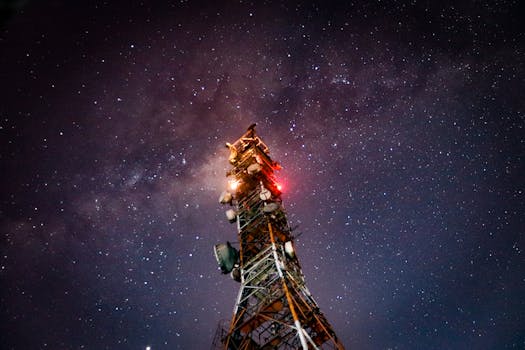
MEO Satellites: Revolutionizing Global Communications with Medium Earth Orbit Technology
MEO satellites, or Medium Earth Orbit satellites, are a type of satellite that orbits the Earth at an altitude of approximately 2,000 to 36,000 kilometers. This range is higher than Low Earth Orbit (LEO) satellites but lower than Geostationary Orbit (GEO) satellites. MEO satellites are revolutionizing global communications, providing faster and more reliable connections than traditional GEO satellites.
MEO satellites are designed to provide a range of services, including telecommunications, navigation, and Earth observation. They offer several advantages over traditional GEO satellites, including lower latency, higher bandwidth, and improved connectivity. MEO satellites are also more resistant to interference and can provide more precise location-based services.
How MEO Satellites Work
MEO satellites work by transmitting and receiving signals to and from Earth-based stations. They use a range of frequencies, including Ka-band, Ku-band, and C-band, to provide a range of services. MEO satellites are typically equipped with advanced antennas and transponders, which allow them to transmit and receive signals with high precision and accuracy.
MEO satellites are often used in constellations, which are groups of satellites that work together to provide global coverage. These constellations can be used to provide a range of services, including broadband internet, mobile communications, and navigation. MEO satellites are also used in hybrid constellations, which combine MEO satellites with LEO and GEO satellites to provide a range of services.
Applications of MEO Satellites
MEO satellites have a range of applications, including telecommunications, navigation, and Earth observation. They are used to provide broadband internet, mobile communications, and other telecommunications services to remote and underserved communities. MEO satellites are also used in navigation systems, such as GPS and Galileo, to provide location-based services.
MEO satellites are also used in Earth observation applications, such as weather forecasting, climate monitoring, and disaster response. They can provide high-resolution images of the Earth’s surface, which can be used to monitor environmental changes, track natural disasters, and respond to emergencies.
Benefits of MEO Satellites
MEO satellites offer several benefits, including faster and more reliable connections, lower latency, and higher bandwidth. They are also more resistant to interference and can provide more precise location-based services. MEO satellites are also more cost-effective than traditional GEO satellites, as they require less power and can be launched into orbit at a lower cost.
MEO satellites are also more flexible than traditional GEO satellites, as they can be easily reconfigured to provide different services. They can be used to provide a range of services, including telecommunications, navigation, and Earth observation, making them a versatile and valuable resource for a range of industries.
In conclusion, MEO satellites are revolutionizing global communications, providing faster and more reliable connections than traditional GEO satellites. They offer several advantages, including lower latency, higher bandwidth, and improved connectivity, making them an essential tool for a range of industries, including telecommunications, navigation, and Earth observation.




